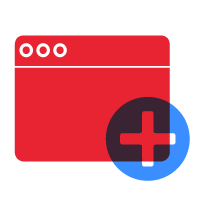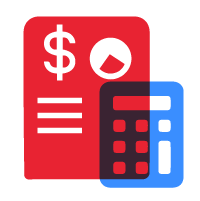If you’re running a B2C business, attracting the right customers goes beyond simply promoting your products or services. Success depends on a well-planned B2C lead generation strategy—one that not only grabs attention but also nurtures and converts potential buyers into loyal customers.
In this guide, we’ll break down everything you need to know about B2C lead generation, how it compares to B2B, and the most effective strategies to drive high-quality leads. Let’s dive in!

What is B2C Lead Generation?
B2C lead generation is the process of attracting individual consumers who are interested in your products or services and guiding them toward making a purchase. Unlike B2B, which involves selling to other businesses through longer sales cycles and relationship-driven strategies, B2C focuses on business-to-consumer transactions, where decisions are often quick and emotionally driven. This means your goal isn’t just to capture attention—it’s to create an instant connection that compels consumers to take action.
The process involves various marketing efforts, such as:
- Creating valuable content that educates, entertains, and builds trust with your target audience
- Leveraging social media platforms to engage potential buyers where they spend the most time
- Using landing pages designed to capture customer information and encourage conversions
- Running social media campaigns that increase brand awareness and attract new leads
- Implementing email marketing to nurture leads and keep your business top-of-mind
By strategically combining these techniques, you attract high-intent leads, nurture relationships, and convert potential buyers into loyal customers—all while maximizing your marketing ROI.

B2C vs. B2B Lead Generation: What’s the Difference?
Understanding the difference between B2C and B2B lead generation is essential for crafting an effective marketing strategy. Each approach requires unique tactics, messaging, and engagement methods, and using the wrong strategy will lead to missed opportunities and wasted resources.
By knowing how these two models differ, you can develop a B2C lead generation strategy that resonates with your audience, drives higher engagement, and improves conversion rates. To maximize your efforts, it’s essential to see how B2C and B2B differ. The table below highlights key distinctions to help you refine your strategy.
| Aspect | B2C Lead Generation | B2B Lead Generation |
|---|---|---|
| Target Audience | Individual consumers looking for personal use products or services | Business decision-makers seeking solutions for company needs |
| Buying Motivation | Emotion-driven, based on convenience, trends, and personal desires | Logic-driven, focused on ROI, efficiency, and long-term value |
| Sales Cycle | Short and fast—purchases can happen instantly or within days | Longer and more complex—often requires multiple touchpoints and approvals |
| Marketing Approach | Engaging and persuasive, using storytelling, social proof, and brand appeal | Informational and value-driven, with data, case studies, and industry insights |
| Lead Nurturing | Minimal—customers often decide quickly based on offers, reviews, and product appeal | Extensive—requires relationship-building through email sequences, demos, and follow-ups |
| Common Channels | Social media, influencer marketing, paid ads, content marketing, and email campaigns | LinkedIn, webinars, industry events, direct outreach, and content marketing |
| Key Challenge | Standing out in a crowded market and keeping consumers engaged | Gaining trust and proving long-term business value |
Why B2C Lead Generation is a Game-Changer for Your Business
An effective B2C lead generation strategy does more than just bring in potential customers—it also drives long-term business growth. Here’s how:
Higher Sales and Revenue
Generating quality leads increases the number of potential buyers who are genuinely interested in your products or services. With the right approach, these leads convert faster, boosting your overall revenue and creating a steady stream of income.
Better Audience Targeting
Instead of casting a wide net, an optimized B2C lead generation strategy helps you reach consumers who are actively searching for what you offer. By leveraging social media platforms, landing pages, and email marketing, you can attract high-intent leads who are more likely to make a purchase.
Increased Brand Awareness
The more visible your brand is, the easier it becomes to attract and retain customers. Through content marketing, social media campaigns, and paid ads, you position your brand in front of the right audience, ensuring they remember you when they’re ready to buy.
Stronger Customer Relationships
Engaging with leads through personalized content, email marketing, and social media interactions builds trust and fosters long-term loyalty. When customers feel valued and connected to your brand, they’re more likely to become repeat buyers and brand advocates.
Improved Marketing ROI
A well-executed lead gen strategy ensures that your marketing budget is spent efficiently. Instead of wasting resources on broad, ineffective campaigns, you can focus on the channels and tactics that drive high-quality leads, maximizing your return on investment.
Scalability and Business Growth
A strong B2C lead generation process allows you to scale your business more effectively. As you generate more leads, you get to refine your sales funnel, automate follow-ups, and expand your reach—ultimately driving consistent growth and long-term success.

Overcoming the Biggest Challenges in B2C Lead Generation
Even with a well-planned B2C lead generation strategy, many businesses struggle to turn potential customers into actual buyers. Several key challenges might make lead generation difficult, limiting your ability to scale and grow effectively. Here are some of the biggest obstacles businesses face:
1. Attracting the Right Audience
Reaching the right consumers is not as simple as casting a wide net. Many B2C businesses struggle with wasted ad spend, low engagement, and leads that never convert. Without clear audience targeting, marketing efforts may attract people who have no real interest in your products or services, leading to poor conversion rates and lower ROI.
2. Standing Out in a Crowded Market
Competition in the B2C space is fierce. With countless brands offering similar products or services, it’s easy to get lost in the noise. If your messaging, branding, and valuable content don’t immediately capture attention, potential leads may overlook your business in favor of competitors with stronger visibility and engagement.
3. Converting Leads into Customers
Generating leads is only half the battle—turning them into paying customers is where many businesses struggle. Poorly designed landing pages, weak CTAs, or an ineffective sales funnel can cause potential buyers to hesitate or abandon the process before making a purchase. Without a smooth, compelling journey, leads often drop off before converting.
4. Managing Multiple Marketing Channels
From social media platforms and email marketing to paid ads and content marketing, B2C companies must manage multiple lead generation channels. However, juggling these efforts without a cohesive strategy may lead to inconsistent messaging, missed opportunities, and inefficient marketing spend. Keeping everything aligned while maximizing results is a significant challenge.
5. Building Trust and Customer Loyalty
With so many options available, consumers are more cautious about where they spend their money. A lack of trust signals—such as reviews, testimonials, or clear brand messaging—can make potential customers hesitant to buy. Even after the first purchase, failing to nurture leads properly through email marketing or personalized content might prevent repeat business and long-term customer loyalty.
Proven B2C Lead Generation Strategies to Attract More Customers
Implementing the right B2C lead generation strategies will help you attract potential customers, nurture their interest, and convert them into loyal buyers. Here are some of the most effective techniques to start using today:
1. Optimize Your Landing Pages for Conversions
Your landing pages are often the first touchpoint for potential customers, making them a critical part of your lead generation strategy. A poorly designed landing page can lead to lost opportunities, while a well-optimized one drives higher conversions. To maximize its impact, ensure your landing pages are:
- Visually appealing and mobile-friendly to provide a seamless user experience
- Clear and concise, focusing on your product or service benefits
- Equipped with strong CTAs (Call-to-Actions) that encourage immediate action
- Optimized with lead capture forms to collect emails and grow your subscriber list
2. Leverage Social Media for Lead Generation
With billions of active users across different social media platforms, it’s one of the best places to find and engage potential customers. A well-planned social media lead generation strategy drives brand awareness, builds trust, and encourages direct interactions with your audience. To maximize your efforts:
- Run targeted social media campaigns on platforms like Facebook, Instagram, and TikTok
- Collaborate with influencers to expand your reach and credibility
- Use interactive content such as polls, quizzes, and giveaways to drive engagement
- Cross-promote email marketing and social media to capture leads from multiple sources
3. Use Content Marketing to Attract Leads
Creating valuable content helps position your brand as an industry authority while also attracting potential customers. Instead of direct selling, content marketing allows you to educate and engage your audience, building trust before they make a purchasing decision. Here are some effective content types:
- Blog posts that address common questions and pain points of your target audience
- Videos and reels that showcase your products or services in action
- Lead magnets like eBooks, checklists, and guides that encourage sign-ups
- Live webinars and Q&A sessions to establish thought leadership and interact with potential customers
4. Implement Email Marketing Campaigns
An email list is one of the most valuable assets for any B2C business. Unlike social media, where algorithm changes can limit your reach, email marketing allows for direct communication with potential buyers. To make your email campaigns more effective:
- Offer incentives like discounts, freebies, or exclusive content in exchange for sign-ups
- Segment your audience to send personalized and relevant messages
- Automate follow-ups to nurture leads over time and keep your brand top-of-mind
- Combine email marketing with social media efforts for better reach and engagement
5. Optimize Your Sales Funnel for Seamless Conversions
A strong sales funnel ensures that leads move smoothly from initial interest to final purchase. If your funnel isn’t optimized, potential customers may drop off before converting. To create a seamless buying journey, focus on:
- Awareness – Capture attention with engaging ads, social media content, and SEO-driven blog posts
- Consideration – Provide detailed product insights, customer testimonials, and comparisons to build trust
- Conversion – Use limited-time offers, discounts, and persuasive CTAs to encourage immediate action

Drive High-Quality B2C Leads and Scale Your Business with Outsource Philippines
Generating B2C leads requires the right strategy, tools, and execution. From understanding the key differences between B2C and B2B lead generation to implementing social media campaigns, content marketing, and email marketing, every step is crucial for attracting and converting potential customers. However, challenges like reaching the right audience, standing out in a crowded market, and managing multiple marketing channels might make the process difficult without the right expertise.
That’s where Outsource Philippines can help. Our experts offer data-driven lead generation services that provide real results. Whether you need high-converting ads, a stronger sales funnel, or better audience engagement, we’re here to help. Let’s grow your business—contact us today!







